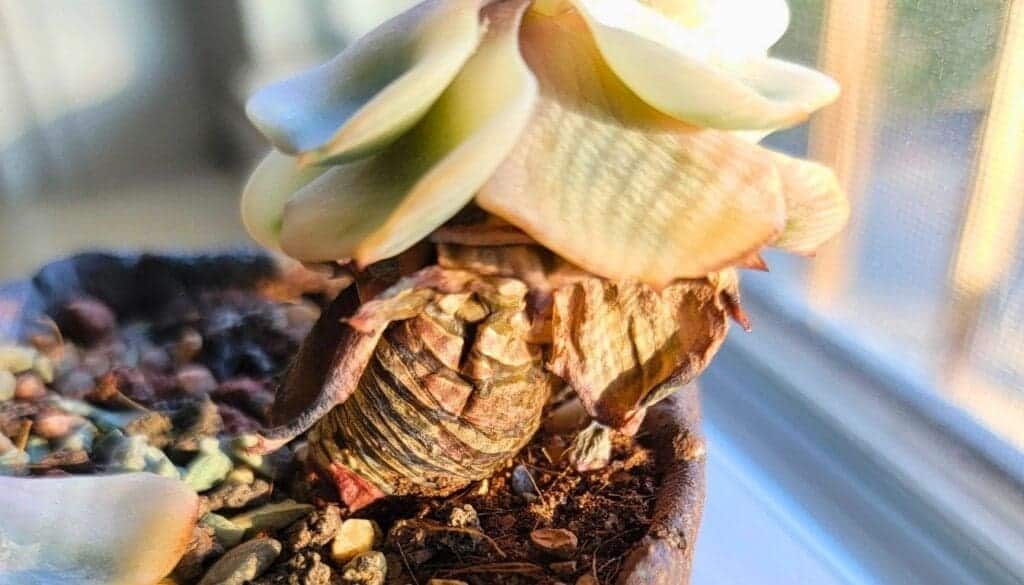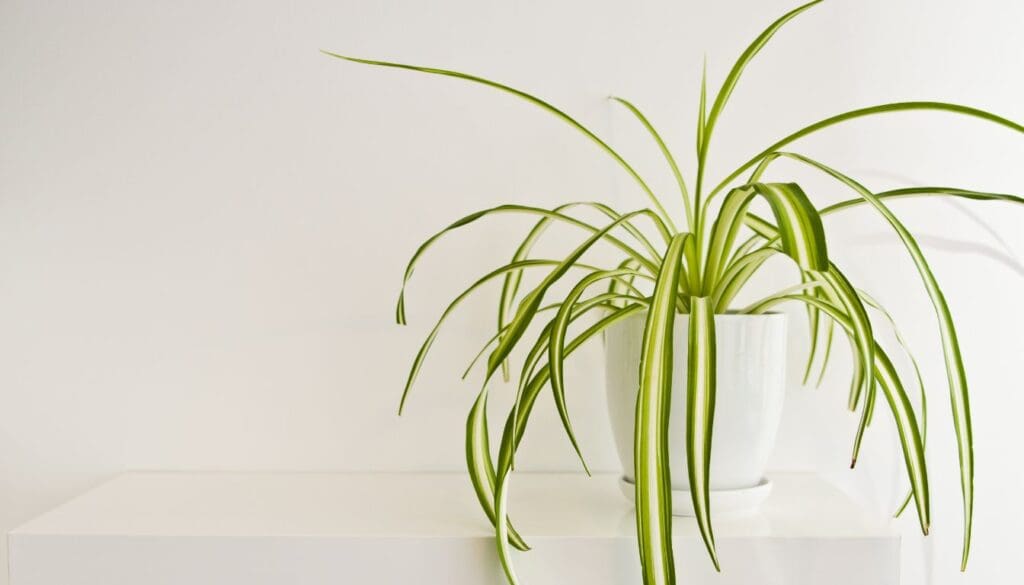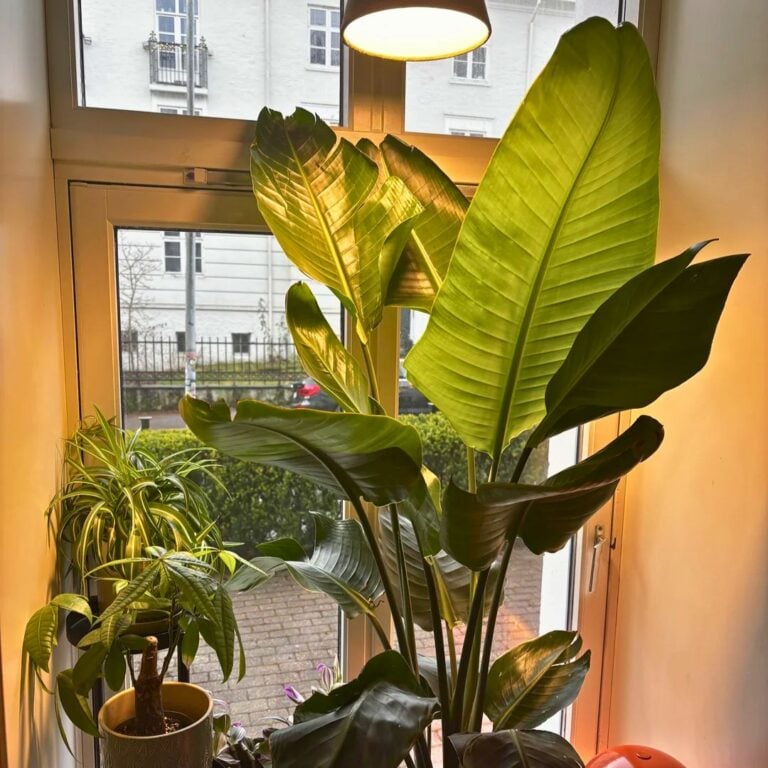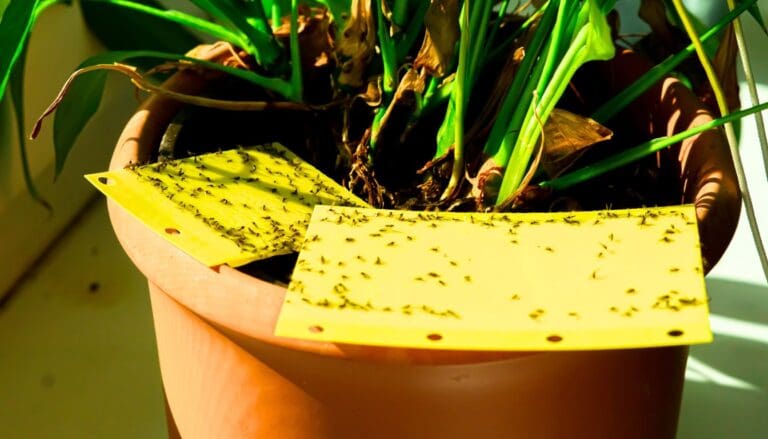4 Signs Your Houseplant Is Too Cold And How To Help It Thrive
I love having plants around my place, but honestly, they can be pretty sensitive to temperature swings.
Cold air stresses them out, and sometimes it’s tough to spot the signs before it’s a real problem.
If you know how to spot these signs early, you can usually step in before real damage sneaks up on you.
When I started watching my plants more closely, I realized even small changes in their leaves or growth patterns told me a lot.
Once you get the hang of what to look for, it’s much easier to keep them happy—even when the temperature drops.
Please note: Simplify Plants is reader-supported. As an Amazon Associate, I earn from qualifying purchases made by our readers with no extra cost added to you all! Some links in the post are affiliate links and I get a commission from purchases made through links in the post.
1) Wilting or drooping leaves

Whenever my plants get too cold, they start looking a bit weak. Leaves that droop or hang down are a dead giveaway that the plant’s not loving the chill.
If I touch the leaves and they feel softer than usual, that’s another clue. Cold air slows how the plant moves water, so the leaves lose their firmness.
Sometimes, the whole plant looks saggy, even if the soil’s still damp. That’s when I know it’s not a watering issue but definitely temperature stress.
Even a quick draft from a window or door can make leaves wilt. I try to keep my plants away from those cold spots so they stay perkier.
Drooping leaves are usually the first thing I check if I think my plant’s too cold. It’s a simple sign, but it helps me act fast.
2) Brown or black leaf edges

If my plant gets too cold, the edges of the leaves turn brown or black. It usually starts at the tips and creeps inward—not a great look.
Cold air makes it tough for the plant to move water, so the leaf edges dry out and die back. The damage looks dry, crispy, or just plain discolored.
I see this most when a plant’s near a drafty window or close to a cold door. Even a quick chill can cause those edges to darken.
When I spot this, I check the room temp right away. If it’s dipping too low, I move the plant somewhere warmer and more stable.
Sometimes the leaves won’t bounce back, but trimming off the dead edges at least tidies things up. The trick is to stop the cold stress before it messes up new growth.
Brown or black edges aren’t just cosmetic—they’re a warning. Catching it early makes a big difference.
3) Slow or stunted growth

If my plant is too cold, it just doesn’t grow like it should. New leaves take forever, and sometimes they don’t show up at all.
Cold air slows the plant’s natural processes, so instead of growing, it’s just trying to survive. That’s why I see fewer new shoots or smaller leaves.
If my plant stops growing in the middle of its active season, I take it as a warning sign. Healthy plants should push out new growth in spring and summer, so a pause usually means something’s off with the temperature.
I also check if new leaves are coming in smaller or looking weak. That’s another hint the cold is holding my plant back.
Moving the plant to a warmer spot, away from windows or drafts, usually helps. Even a small temperature change can get things moving again.
4) Leaves turning pale or yellow

If my plant’s leaves start turning pale or yellow, I know it’s probably cold stress. The change usually starts at the tips or edges and then spreads.
When it gets too cold, the plant struggles to move water and nutrients. That’s when the leaves lose their green color. Cold stress slows growth and weakens the plant, and you can really see it in the leaves.
I’ve noticed yellowing happens faster if the plant’s near a drafty spot. Even a quick burst of chilly air can do some damage. Once I moved a plant to a warmer area, the new leaves came back greener.
If the room feels cool to me, it’s probably too cold for the plant too. Keeping plants away from cold drafts really helps prevent more leaves from turning pale or yellow.
How Cold Temperatures Affect Houseplants
Cold air just slows plants down and makes them weaker. Some types lose their color or even stop growing if it gets too chilly.
Impact on Growth and Health
When my houseplant is too cold, its growth slows down. The leaves might turn yellow, curl, or even drop off.
Cold stress makes roots less able to take in water and nutrients, so you end up with weak stems and dull leaves. I’ve noticed photosynthesis drops in chilly rooms, so the plant just looks tired and fragile.
If the soil stays cold, roots can rot because they’re sitting in dampness too long. Cold air also lowers a plant’s natural defenses, so pests like spider mites or fungus gnats show up more easily.
Sometimes, the plant just stops making new leaves until things warm up again.
Common Vulnerable Plant Types
Not every houseplant reacts the same way to cold. Tropical plants like pothos, philodendron, and monstera are the most sensitive. Their leaves often get brown edges or spots after a draft.
Succulents and cacti can be touchy too. While they like dry air, they don’t handle cold soil at all. Too much chill can mean mushy leaves or stem damage.
Here’s a quick list of plants that usually need extra warmth:
- Fiddle Leaf Fig
- Peace Lily
- Orchids
- Rubber Plant
These types do best above 60°F (15°C). Anything colder, and you’re asking for trouble.
What to Do If Your Houseplant Is Too Cold
When my plant gets too cold, I focus on warming it up right away and making sure it doesn’t happen again. Both matter, because quick fixes won’t help if I don’t keep things steady for the long run.
Simple Ways to Warm Up Your Plant
I move my plant to a warmer spot, away from drafty windows and doors. A table near an inside wall usually works better than a windowsill in winter.
I always check the room temperature. Most houseplants are happiest between 65–75°F (18–24°C). If the room’s chilly, I’ll turn up the heat a little or use a small space heater—just not too close.
If the soil feels cold, I let it dry out a bit before watering. Cold, soggy soil just stresses the roots more. I use room-temperature water instead of cold tap water to avoid shocking the plant.
Sometimes I’ll put the pot on a plant heating mat for gentle warmth. It’s a little thing, but it really helps the roots.
Long-Term Prevention Tips
I keep my plants in stable spots where the temperature doesn’t swing wildly. That means no radiators, vents, or drafty entryways.
I pay attention to seasonal changes too. In winter, I move plants a few feet away from windows so they don’t get blasted by cold air at night. In summer, I make sure they’re not in direct air conditioning.
Another trick? Grouping plants together. When plants cluster, the air stays a bit warmer and more humid—kind of like a little plant community.
I always check what type of plant I have, too. Some tropicals just need more warmth. Knowing what they like helps me set up my space so they stay healthy all year.
Frequently Asked Questions
When my plants get too cold, they usually show it in their leaves, color, or growth. Cold stress is pretty obvious once you know what to look for, so you can jump in and fix things quickly.
What symptoms indicate my houseplant might be suffering from cold temperatures?
I usually notice wilting, drooping leaves, pale color, or brown edges when my plant’s too cold. If the temperature drops suddenly, these changes can happen fast.
How can I tell if my plant’s discoloration is due to the cold?
If the cold is to blame, leaves often turn pale yellow or even white. If my plant was healthy before and the only thing that changed was the temperature, I’m pretty sure that’s the cause.
Can droopy leaves be a sign that my plant is too cold?
Absolutely. Cold air slows water movement, so the leaves lose their firmness. I see them hanging lower than usual when this happens.
What are the common signs of cold stress in indoor plants?
I look for brown or black leaf tips, drooping leaves, and slow growth. Those are the big three I see when my plants aren’t happy with the temperature.
How do I know if the temperature is too low for my houseplants?
I use a thermometer to check the room. If it drops below 60°F for most houseplants, that’s too cold. Some tropicals get fussy even sooner.
What should I look for to determine if my plant’s slow growth is caused by cold conditions?
If your plant was thriving before and then suddenly slows down during a cold snap, it’s pretty easy to suspect the weather.
Honestly, slow or stunted growth in a chilly room often means your plant’s just not loving those lower temperatures.
Recommended Garden Supplies
| Product Image | Our Recommended Gardening Supplies | Check Offers! |
|---|---|---|
Top Top
Top
Top
Top
Top
Top
Top
Top | rePotme Houseplant and Tropical Classic Potting Soil Mix | Check Offer On Amazon |
 Top
Top
Top
Top
Top
Top
Top
Top | Espoma Organic Indoor Plant Food | Check Offer On Amazon |
 Top
Top
Top
Top
Top
Top
Top
Top | GooingTop LED Grow Light 6000K Full Spectrum Clip Plant Growing Lamp | Check Offer On Amazon |
 Top
Top
Top
Top
Top
Top
Top
Top | Soil Moisture Meter | Check Offer On Amazon |
 Top
Top
Top
Top
Top
Top
Top
Top | Govee Hygrometer Thermometer, Bluetooth Enabled! | Check Offer On Amazon |
 Top
Top | LEVOIT Humidifiers for Large Room(Best For Plants) | Check Offer On Amazon |
 Top
Top
Top
Top
Top
Top
Top
Top | Upgraded DIY Automatic Drip Irrigation Kit, 15 Potted Houseplants Support | Check Offer On Amazon |
 Top
Top
Top
Top
Top
Top
Top
Top | Stainless Steel Heavy Duty Gardening Tool Set | Check Offer On Amazon |
 Top
Top
Top
Top
Top
Top
Top
Top | Bonide Insecticidal Soap | Check Offer On Amazon |
 Top
Top
Top
Top
Top
Top
Top
Top | Bonide 32 oz Spray Neem Oil for Organic Gardening | Check Offer On Amazon |
 Top
Top
Top
Top
Top
Top
Top
Top | Garden Safe Fungicide | Check Offer On Amazon |






